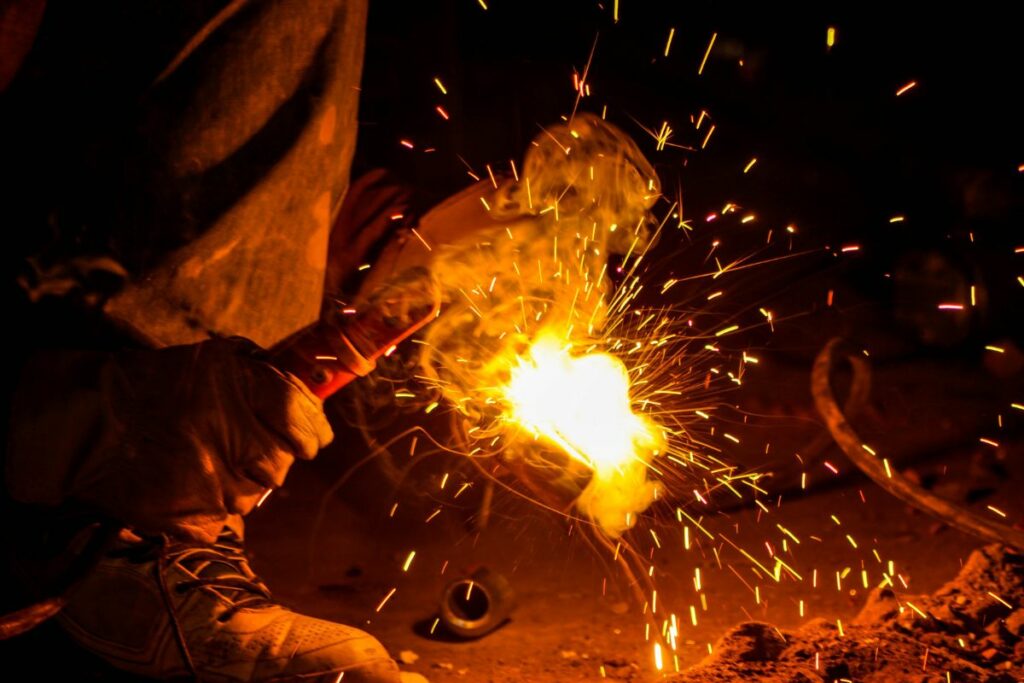
During the welding process, metal components are heated, melted, and joined together to create durable parts and equipment. When melting surfaces, hazardous explosions and fatal injuries are more likely to happen. Without proper maintenance and precautionary measures, welders are prone to suffer from these inevitable circumstances.
For your safety, take note of the following types of materials to avoid in a welding worksite:
Hot work welding procedure involves cutting, brazing, pipe thawing, and soldering. This type of welding is mostly performed in enclosed spaces, which presents an increased risk of fire or explosion. Highly ignitable materials such as cotton, bulk sulfur, and baled paper are prohibited in hot work areas.
Before welding commences, combustible floors except for wood on concrete should be covered with damp sand to avoid electrocution. Any flammable materials must be relocated 35 ft from the weld zone. If not, cover the combustibles with fire-resistant shields or blankets.
Bruises, cuts, and burns are among the common injuries in the weld zone. Many welders are not wearing proper personal protective equipment (PPE), thus exposing them to hazardous fumes and chemicals. Without wearing eye protection, they might get exposed to arc rays that may cause intense pain or blindness.
Avoid wearing clothing made of synthetic materials such as rayon or polyester. Synthetic fibers may easily melt when directly exposed to extreme heat. Welders should wear heavyweight and tightly woven clothing that is resistant to flame such as cotton and leather. Shielded helmets and rubber gloves can also protect them from molten metal.
Arc welding is explosive in nature. To avoid fire in the weld area, welders must not conduct any hot work procedure on any previously used storage of solvents or other flammable liquids. Do not weld in drums, barrels, tanks, and other containers directly on a concrete floor to prevent any accidents. By doing so, the steam can build up and cause an explosion.
Welding materials should be put on a firebrick surface with carefully positioned cables to avoid hot debris from falling. Electric shock can be fatal for welders; therefore, they must secure an insulating mat under work to be welded.
Transporting cylinders without their caps in place could result in ruptured hoses. Welders must examine hoses regularly for loose connections. Rough handling of cylinders may cause leakage. This can produce extreme pressure, which is a surefire way to cause an explosion. When using capped valves, install them in a horizontal position facing upright to eliminate hazardous condensates.
Water can pose electric current to flow freely, which can be dangerous for welders. Welding in rain or wet conditions is not prohibited, but welders must take necessary precautions. Like water, any combustible liquid like spilled grease or oil can make anyone at risk of getting electrocuted. With 10,000 volts and above, anyone can suffer from severe injury or death. Similarly, never use electrical components on a wet floor or when your hands, feet, and body are wet or sweating.
A good rule of thumb in welding is that all flammable materials should be moved away from the worksite. Welders, technicians, and anyone else in the weld zone must wear a protective covering to combat hazardous gases or molten metal from penetrating the eyes or skin.
Make sure to use fire-resistant blankets or shields to avoid fires or explosions. Carrying out safety training and regular welding maintenance is also essential to prevent accidents. The welding workplace must also be well-ventilated for the safety of welders.